Glaciers are melting faster and with more consequences than expected
Thursday, 10 February 2022 00:28 Developments at the South Pole are raising new concerns. A group of smaller glaciers, named Pope, Smith and Kohler, are melting faster than expected. So far, the neighbouring giant glaciers, Thwaites and Pine Island, have been the focus of research because they are extremely fragile and could raise global sea levels by up to 1.2 metres.
The German Aerospace Center (Deutsches Zentrum fur Lu
Developments at the South Pole are raising new concerns. A group of smaller glaciers, named Pope, Smith and Kohler, are melting faster than expected. So far, the neighbouring giant glaciers, Thwaites and Pine Island, have been the focus of research because they are extremely fragile and could raise global sea levels by up to 1.2 metres.
The German Aerospace Center (Deutsches Zentrum fur Lu Operational Optical Data Services for Meteosat Satellites
Thursday, 10 February 2022 00:28 Following an open invitation to tender, the technology multinational GMV, European industrial leader in Space Situational Awareness (SSA) and Space Surveillance and Tracking (SST), has been awarded a new contract by the European Organisation for the Exploitation of Meteorological Satellites (EUMETSAT), located in Darmstadt (Germany) for the provision of Operational Optical Data Services to suppo
Following an open invitation to tender, the technology multinational GMV, European industrial leader in Space Situational Awareness (SSA) and Space Surveillance and Tracking (SST), has been awarded a new contract by the European Organisation for the Exploitation of Meteorological Satellites (EUMETSAT), located in Darmstadt (Germany) for the provision of Operational Optical Data Services to suppo The abyssal world: the last terra incognita of the Earth surface
Thursday, 10 February 2022 00:28 The deep-ocean floor is the least explored ecosystem on the planet, despite covering more than 60% of the Earth surface. Largely unknown life in abyssal sediments, from benthic animals to microbes, helps to recycle and/or sequester the sinking (in)organic matter originating from pelagic communities that are numerically dominated by microscopic plankton.
Benthic ecosystems thus underpin two
The deep-ocean floor is the least explored ecosystem on the planet, despite covering more than 60% of the Earth surface. Largely unknown life in abyssal sediments, from benthic animals to microbes, helps to recycle and/or sequester the sinking (in)organic matter originating from pelagic communities that are numerically dominated by microscopic plankton.
Benthic ecosystems thus underpin two A new programming language for high-performance computers
Thursday, 10 February 2022 00:28 High-performance computing is needed for an ever-growing number of tasks - such as image processing or various deep learning applications on neural nets - where one must plow through immense piles of data, and do so reasonably quickly, or else it could take ridiculous amounts of time. It's widely believed that, in carrying out operations of this sort, there are unavoidable trade-offs between spe
High-performance computing is needed for an ever-growing number of tasks - such as image processing or various deep learning applications on neural nets - where one must plow through immense piles of data, and do so reasonably quickly, or else it could take ridiculous amounts of time. It's widely believed that, in carrying out operations of this sort, there are unavoidable trade-offs between spe NASA outlines concerns about Starlink next-generation constellation in FCC letter
Wednesday, 09 February 2022 23:48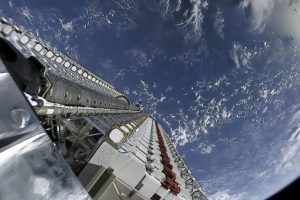
NASA says that SpaceX’s proposal for a second-generation Starlink constellation with 30,000 satellites could lead to a “significant increase” in potential collisions in low Earth orbit and interfere with the agency’s launches and scientific activities.
The post NASA outlines concerns about Starlink next-generation constellation in FCC letter appeared first on SpaceNews.
KSAT to support NASA LunIR mission
Wednesday, 09 February 2022 23:40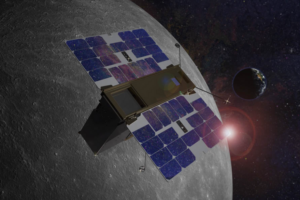
Kongsberg Satellite Services is providing ground network support for the Lunar InfraRed Imaging mission.
The post KSAT to support NASA LunIR mission appeared first on SpaceNews.
Space Force asks launch companies for insight on where the industry is going
Wednesday, 09 February 2022 23:24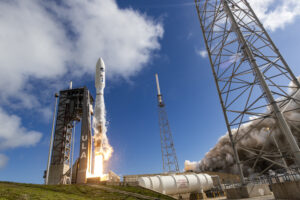
The U.S. Space Force is trying to identify what launch companies might challenge SpaceX and United Launch Alliance when their current contracts are re-competed in 2024.
The post Space Force asks launch companies for insight on where the industry is going appeared first on SpaceNews.
Surprisingly high fraction of dead galaxies found in ancient galactic 'city'
Wednesday, 09 February 2022 21:03
Dozens of SpaceX internet satellites lost to geomagnetic storm
Wednesday, 09 February 2022 20:51 Up to 40 SpaceX high-speed internet satellites have been knocked out of orbit by a geomagnetic storm shortly after launch, but pose little threat to Earth as they burn up in the atmosphere, the company said.
Geomagnetic storms are caused by ejections of the solar corona into space, resulting in disturbances to the Earth's upper atmosphere and increased drag on objects in low orbits.
The
Up to 40 SpaceX high-speed internet satellites have been knocked out of orbit by a geomagnetic storm shortly after launch, but pose little threat to Earth as they burn up in the atmosphere, the company said.
Geomagnetic storms are caused by ejections of the solar corona into space, resulting in disturbances to the Earth's upper atmosphere and increased drag on objects in low orbits.
The Viasat adds polar coverage to ground station-as-a-service business
Wednesday, 09 February 2022 17:31
Viasat plans to deploy an antenna in Sweden in April to give its ground station-as-a-service business polar coverage for the first time, the California-based satellite operator said Feb. 9.
The post Viasat adds polar coverage to ground station-as-a-service business appeared first on SpaceNews.
Satellite IoT companies don’t see broadband systems as competitors
Wednesday, 09 February 2022 16:07
Companies developing internet-of-things satellite constellations don’t see other broadband megaconstellations as direct competitors, but some see an opportunity to learn from them.
The post Satellite IoT companies don’t see broadband systems as competitors appeared first on SpaceNews.
SpaceX satellites falling out of orbit after solar storm
Wednesday, 09 February 2022 15:11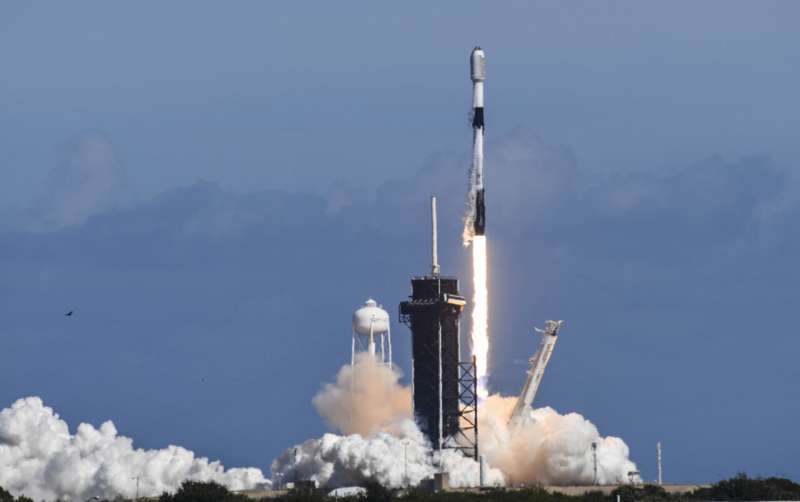
Materials science in motion | Cosmic Kiss
Wednesday, 09 February 2022 14:00 Video:
00:02:01
Video:
00:02:01
Watch ESA astronaut Matthias Maurer exchange a sample in the Materials Science Laboratory (MSL) on the International Space Station.
The sample is for an experiment called MICAST that aims to deepen our understanding of the physical principles that govern solidification processes in metal alloys. This knowledge could help improve casting processes on Earth, leading to the development of new lightweight, high-performance materials for future spacecraft and innovation.
Matthias is spending approximately six months aboard the Space Station for his ESA mission Cosmic Kiss. During this time, he will support around 36 European and many more international experiments in orbit.
China plans more than 50 space launches in 2022
Wednesday, 09 February 2022 12:55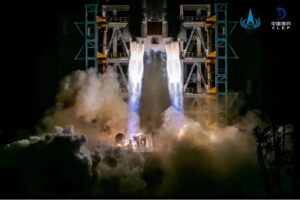
China’s main space contractor aims to launch at least 140 spacecraft across more than 50 launches in 2022 following its busiest year in space so far.
Dozens of Starlink satellites from latest launch to reenter after geomagnetic storm
Wednesday, 09 February 2022 11:32
Up to 80% of the Starlink satellites launched by SpaceX last week will soon reenter, or have already done so, because a geomagnetic storm kept the spacecraft from raising their orbits.
The post Dozens of Starlink satellites from latest launch to reenter after geomagnetic storm appeared first on SpaceNews.

